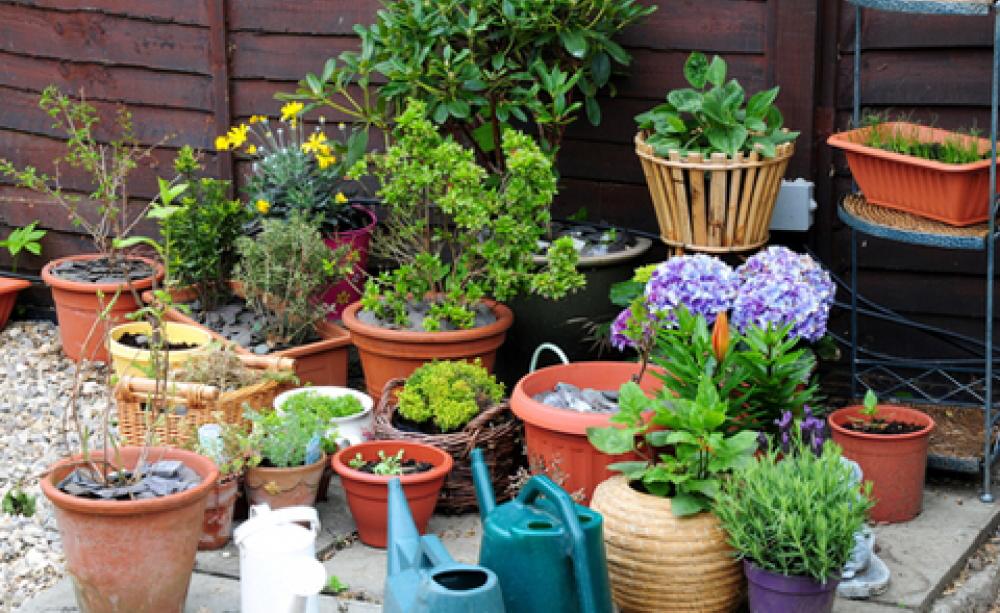
The first question you have to ask yourself when planning your container garden is where you would prefer your plants to grow: indoors or outdoors. Many people think that container gardening is exclusively for inside the home or on the patio, but it may actually be quite useful in almost any garden situation.
Container Garden Benefits
Since containers are so versatile, using them is great for almost any kind of plant you want to grow. If you set up your garden in containers and you later realize that it needs to be moved, the difficulty is kept to a minimum—not so with a traditional garden!
Bad weather can come up quickly; if it happens to you, moving your garden indoors or to a garage or a basement is easy. But if bad weather comes against a regular garden, there’s not much that you can do. You may discover after some time that your plants aren’t faring well because of too much sun or too much shade; with potted plants, you can simply move them to a new location, but you can’t save your traditional garden.
Container Garden Locations
If you want to place your container garden outside, then picking a good spot for it is vital. Getting the appropriate amount of sun for your plants is important, but the garden must be easily accessible—you may be very reluctant to work in your garden if you have to walk a few hundred yards to get to it!
Your garden should not be near any roads or streets—cars can pollute and throw dust in the garden, hurting the plants and even contaminating them. And you certainly don’t want to eat any of that pollution, so ensure that your plants aren’t close to the roads.
On the other hand, placing your garden inside brings some decisions, too. Since plants need to be kept warm, you should select the warmest place in your house—especially if you use air conditioning. Plants tend not to do well in chilly homes, so if your home is cool, you may want to close the vent to the room in which you place your plants. Preferably, you should choose a room that gets a lot of sunlight naturally.
Natural light is best for helping plants to thrive. If none of your rooms have a lot of sunlight, then you’ll have to purchase special plant lights—not any fluorescent lights, because your plants won’t thrive in those conditions. They have to be lights specially designed to help plants to grow. These use light in a broad spectrum, which is more like natural light than standard bulbs tend to be.
You may also find yourself having to modify the humidity in your garden. You need to be careful, because some plants thrive more in a high humidity area, whereas other prefer a low humidity area. Special equipment may be needed for adjusting the humidity, especially if you’re raising delicate or finicky plants. But that should not be a problem unless you’re raising exotic plants.
Choosing Container Garden Plants
Your next decision revolves around what you want to grow. Consider yourself warned: choosing too many varieties frustrates many rookie gardeners. You shouldn’t grow anything that you could pick up, fully grown and healthy, at your grocery store.
Instead, focus on growing fruits or vegetables that you can’t find locally, or perhaps ones that are too expensive or are lacking in quality. Tomatoes are a great example because the quality of store-bought tomatoes is often quite low.
Organic Container Gardening
Your last decision is whether you want your garden grown organically. Indoors, this is usually quite easy—but outdoors, dealing with pests may frustrate you before too long. You shouldn’t feel bad if you find organic gardening too much trouble at first. It will still be there when you’ve garnered more experience in the field.